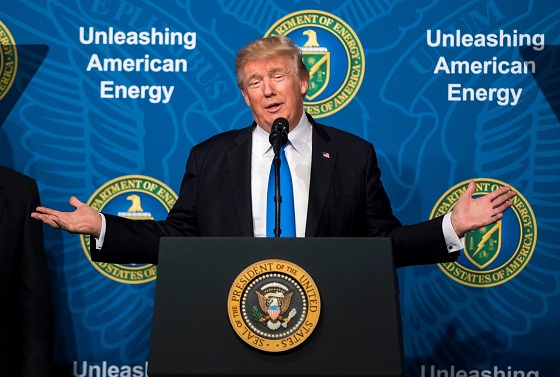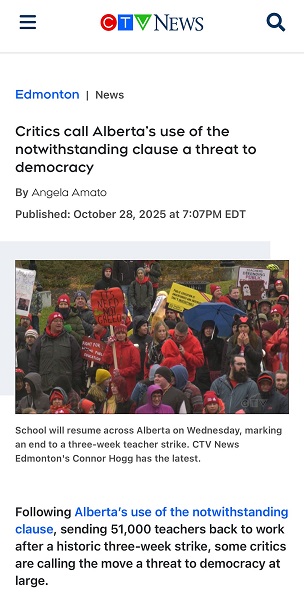Brownstone Institute
The Cure Was Vastly Worse than the Disease

Fully 27 months into one of history’s most horrific of man-made global fiascos, after basically going about life as normal by climbing 14ers in Colorado, working a frontline public librarian job and traveling throughout the country, it happened.
My family and I finally got Covid. I am 52 and well within the range of someone who might expect, according to the media, a desperate battle with an unending cough, horrific and mind-numbing weeks of bed-ridden hell and possibly death on a respirator.
Covid was, as expected, a non-event.
If there is anything I would equate it to personally it is just a weird and mildly unpleasant experience where I lost my taste and smell and felt a fatigue not unlike being vaguely poisoned. If I were to characterize the severity of my particular case it would rank far below any flu I’ve had and possibly in the middle tier of colds, even though it didn’t actually even really FEEL like the sniffles.
My children, girls aged 16 and 12, both had slightly more intense symptoms, not unlike a bad cold virus. My wife and I refused to vaccinate them. They are now fine and don’t even have any residual symptoms after 3 days of taking it easy.
Covid exists. I have never doubted this. What does it feel like? I now can say that I’m even more firmly in the Martin Kulldorff “focused protection” camp having lived through it. If it feels like anything at all it is despair: the continued psychological despair that comes with knowing that your government hit the panic button and ever since has lied to you at every turn, caused massive chaos and destruction amongst your community and family at large, turned your friends and relatives against one another, made your workplace into a Maiost, health authoritarian hellscape, caused your best friend to lose his job, but perhaps worst of all put our youngest citizens out to pasture and destroyed many young prospects.
A destruction so thorough and vast that at a friend’s son’s recent high school graduation, only two of eight of his son’s friends even matriculated.
My 16-year old daughter suffers chronic depression after losing all her activities, some of her closest family and most of her friends in 2020, some of them lost purely due to disagreements about Covid protocols. Perhaps even more criminal and insidious is exposing our children to endless rounds of a needless and toxic “vaccine” that offers little if any protection for them.
Was my mild and unnatural feeling illness ameliorated by the fact that I received two rounds of the Pfizer vaccine in March and April of 2021? Perhaps? But probably not. I would expect any vaccine prophylactic would have worn off long ago. Indeed, let’s go down that path a little further.
The most inexplicable element to this catastrophic global panic is that, anecdotally, I found Covid really, really weird. Why did I lose my sense of smell so profoundly when this has never happened in a cold or flu before? It is gone, seemingly for good. What possible “gain-of-function” experiment caused this symptom?
“Experts” will claim that I was lucky just to lose this. But I wasn’t so lucky when I took my first round of the vaccine and suffered from an endlessly racing heart for two weeks straight–a symptom from which I’m still not sure I’ve completely recovered.
Finally, there is the brutal stigma associated with the illness itself. What does one really even say after coming down with this bizarre and altogether benign ailment? To all the radically woke people at my workplace, some of whom won’t even talk to me anymore because I refuse to wear a mask in a mask-optional environment: saying that it was basically a strange joke of a disease will only raise their ire.
Yet, putting any emphasis on the disease itself goes against two years of my own belief that it was anything but most likely a lab-induced virus that just severely affects the morbidly sick and aged and the very, very unlucky.
Giving Covid any of the sorts of terrifying reality that the mainstream corporate media and our technocratic elites have given it would be participating in the lie. I will never give power to that lie. Indeed, I will continue to expose the lie.
If we don’t keep speaking out about the horrors that the “public health” mafia, liberal elite, and mainstream scientific narrative has wrought upon us, we will continue down a path toward tyranny of a tiny coterie of “experts” who have perhaps intentionally led us into a miasma of destroyed human lives and societies.
Families like mine can only begin to pick up the pieces. There seems to be no real long-term electoral solution to this, and that may be correct, but I do know that those who are on the right side of history also seem to be in a position to make some kind of major difference in the future.
Reflect on that and let your health and heart lead the way, whatever your political persuasion.
Brownstone Institute
Bizarre Decisions about Nicotine Pouches Lead to the Wrong Products on Shelves

From the Brownstone Institute
A walk through a dozen convenience stores in Montgomery County, Pennsylvania, says a lot about how US nicotine policy actually works. Only about one in eight nicotine-pouch products for sale is legal. The rest are unauthorized—but they’re not all the same. Some are brightly branded, with uncertain ingredients, not approved by any Western regulator, and clearly aimed at impulse buyers. Others—like Sweden’s NOAT—are the opposite: muted, well-made, adult-oriented, and already approved for sale in Europe.
Yet in the United States, NOAT has been told to stop selling. In September 2025, the Food and Drug Administration (FDA) issued the company a warning letter for offering nicotine pouches without marketing authorization. That might make sense if the products were dangerous, but they appear to be among the safest on the market: mild flavors, low nicotine levels, and recyclable paper packaging. In Europe, regulators consider them acceptable. In America, they’re banned. The decision looks, at best, strange—and possibly arbitrary.
What the Market Shows
My October 2025 audit was straightforward. I visited twelve stores and recorded every distinct pouch product visible for sale at the counter. If the item matched one of the twenty ZYN products that the FDA authorized in January, it was counted as legal. Everything else was counted as illegal.
Two of the stores told me they had recently received FDA letters and had already removed most illegal stock. The other ten stores were still dominated by unauthorized products—more than 93 percent of what was on display. Across all twelve locations, about 12 percent of products were legal ZYN, and about 88 percent were not.
The illegal share wasn’t uniform. Many of the unauthorized products were clearly high-nicotine imports with flashy names like Loop, Velo, and Zimo. These products may be fine, but some are probably high in contaminants, and a few often with very high nicotine levels. Others were subdued, plainly meant for adult users. NOAT was a good example of that second group: simple packaging, oat-based filler, restrained flavoring, and branding that makes no effort to look “cool.” It’s the kind of product any regulator serious about harm reduction would welcome.
Enforcement Works
To the FDA’s credit, enforcement does make a difference. The two stores that received official letters quickly pulled their illegal stock. That mirrors the agency’s broader efforts this year: new import alerts to detain unauthorized tobacco products at the border (see also Import Alert 98-06), and hundreds of warning letters to retailers, importers, and distributors.
But effective enforcement can’t solve a supply problem. The list of legal nicotine-pouch products is still extremely short—only a narrow range of ZYN items. Adults who want more variety, or stores that want to meet that demand, inevitably turn to gray-market suppliers. The more limited the legal catalog, the more the illegal market thrives.
Why the NOAT Decision Appears Bizarre
The FDA’s own actions make the situation hard to explain. In January 2025, it authorized twenty ZYN products after finding that they contained far fewer harmful chemicals than cigarettes and could help adult smokers switch. That was progress. But nine months later, the FDA has approved nothing else—while sending a warning letter to NOAT, arguably the least youth-oriented pouch line in the world.
The outcome is bad for legal sellers and public health. ZYN is legal; a handful of clearly risky, high-nicotine imports continue to circulate; and a mild, adult-market brand that meets European safety and labeling rules is banned. Officially, NOAT’s problem is procedural—it lacks a marketing order. But in practical terms, the FDA is punishing the very design choices it claims to value: simplicity, low appeal to minors, and clean ingredients.
This approach also ignores the differences in actual risk. Studies consistently show that nicotine pouches have far fewer toxins than cigarettes and far less variability than many vapes. The biggest pouch concerns are uneven nicotine levels and occasional traces of tobacco-specific nitrosamines, depending on manufacturing quality. The serious contamination issues—heavy metals and inconsistent dosage—belong mostly to disposable vapes, particularly the flood of unregulated imports from China. Treating all “unauthorized” products as equally bad blurs those distinctions and undermines proportional enforcement.
A Better Balance: Enforce Upstream, Widen the Legal Path
My small Montgomery County survey suggests a simple formula for improvement.
First, keep enforcement targeted and focused on suppliers, not just clerks. Warning letters clearly change behavior at the store level, but the biggest impact will come from auditing distributors and importers, and stopping bad shipments before they reach retail shelves.
Second, make compliance easy. A single-page list of authorized nicotine-pouch products—currently the twenty approved ZYN items—should be posted in every store and attached to distributor invoices. Point-of-sale systems can block barcodes for anything not on the list, and retailers could affirm, once a year, that they stock only approved items.
Third, widen the legal lane. The FDA launched a pilot program in September 2025 to speed review of new pouch applications. That program should spell out exactly what evidence is needed—chemical data, toxicology, nicotine release rates, and behavioral studies—and make timely decisions. If products like NOAT meet those standards, they should be authorized quickly. Legal competition among adult-oriented brands will crowd out the sketchy imports far faster than enforcement alone.
The Bottom Line
Enforcement matters, and the data show it works—where it happens. But the legal market is too narrow to protect consumers or encourage innovation. The current regime leaves a few ZYN products as lonely legal islands in a sea of gray-market pouches that range from sensible to reckless.
The FDA’s treatment of NOAT stands out as a case study in inconsistency: a quiet, adult-focused brand approved in Europe yet effectively banned in the US, while flashier and riskier options continue to slip through. That’s not a public-health victory; it’s a missed opportunity.
If the goal is to help adult smokers move to lower-risk products while keeping youth use low, the path forward is clear: enforce smartly, make compliance easy, and give good products a fair shot. Right now, we’re doing the first part well—but failing at the second and third. It’s time to fix that.
Addictions
The War on Commonsense Nicotine Regulation

From the Brownstone Institute
Cigarettes kill nearly half a million Americans each year. Everyone knows it, including the Food and Drug Administration. Yet while the most lethal nicotine product remains on sale in every gas station, the FDA continues to block or delay far safer alternatives.
Nicotine pouches—small, smokeless packets tucked under the lip—deliver nicotine without burning tobacco. They eliminate the tar, carbon monoxide, and carcinogens that make cigarettes so deadly. The logic of harm reduction couldn’t be clearer: if smokers can get nicotine without smoke, millions of lives could be saved.
Sweden has already proven the point. Through widespread use of snus and nicotine pouches, the country has cut daily smoking to about 5 percent, the lowest rate in Europe. Lung-cancer deaths are less than half the continental average. This “Swedish Experience” shows that when adults are given safer options, they switch voluntarily—no prohibition required.
In the United States, however, the FDA’s tobacco division has turned this logic on its head. Since Congress gave it sweeping authority in 2009, the agency has demanded that every new product undergo a Premarket Tobacco Product Application, or PMTA, proving it is “appropriate for the protection of public health.” That sounds reasonable until you see how the process works.
Manufacturers must spend millions on speculative modeling about how their products might affect every segment of society—smokers, nonsmokers, youth, and future generations—before they can even reach the market. Unsurprisingly, almost all PMTAs have been denied or shelved. Reduced-risk products sit in limbo while Marlboros and Newports remain untouched.
Only this January did the agency relent slightly, authorizing 20 ZYN nicotine-pouch products made by Swedish Match, now owned by Philip Morris. The FDA admitted the obvious: “The data show that these specific products are appropriate for the protection of public health.” The toxic-chemical levels were far lower than in cigarettes, and adult smokers were more likely to switch than teens were to start.
The decision should have been a turning point. Instead, it exposed the double standard. Other pouch makers—especially smaller firms from Sweden and the US, such as NOAT—remain locked out of the legal market even when their products meet the same technical standards.
The FDA’s inaction has created a black market dominated by unregulated imports, many from China. According to my own research, roughly 85 percent of pouches now sold in convenience stores are technically illegal.
The agency claims that this heavy-handed approach protects kids. But youth pouch use in the US remains very low—about 1.5 percent of high-school students according to the latest National Youth Tobacco Survey—while nearly 30 million American adults still smoke. Denying safer products to millions of addicted adults because a tiny fraction of teens might experiment is the opposite of public-health logic.
There’s a better path. The FDA should base its decisions on science, not fear. If a product dramatically reduces exposure to harmful chemicals, meets strict packaging and marketing standards, and enforces Tobacco 21 age verification, it should be allowed on the market. Population-level effects can be monitored afterward through real-world data on switching and youth use. That’s how drug and vaccine regulation already works.
Sweden’s evidence shows the results of a pragmatic approach: a near-smoke-free society achieved through consumer choice, not coercion. The FDA’s own approval of ZYN proves that such products can meet its legal standard for protecting public health. The next step is consistency—apply the same rules to everyone.
Combustion, not nicotine, is the killer. Until the FDA acts on that simple truth, it will keep protecting the cigarette industry it was supposed to regulate.
-

 Censorship Industrial Complex2 days ago
Censorship Industrial Complex2 days agoHow the UK and Canada Are Leading the West’s Descent into Digital Authoritarianism
-

 Business2 days ago
Business2 days agoCapital Flight Signals No Confidence In Carney’s Agenda
-

 International2 days ago
International2 days agoThe capital of capitalism elects a socialist mayor
-

 Daily Caller1 day ago
Daily Caller1 day agoUS Eating Canada’s Lunch While Liberals Stall – Trump Admin Announces Record-Shattering Energy Report
-

 Justice23 hours ago
Justice23 hours agoCarney government lets Supreme Court decision stand despite outrage over child porn ruling
-

 Business23 hours ago
Business23 hours agoCarney’s budget spares tax status of Canadian churches, pro-life groups after backlash
-

 Daily Caller18 hours ago
Daily Caller18 hours agoUN Chief Rages Against Dying Of Climate Alarm Light
-

 Business1 day ago
Business1 day agoPulling back the curtain on the Carney government’s first budget














